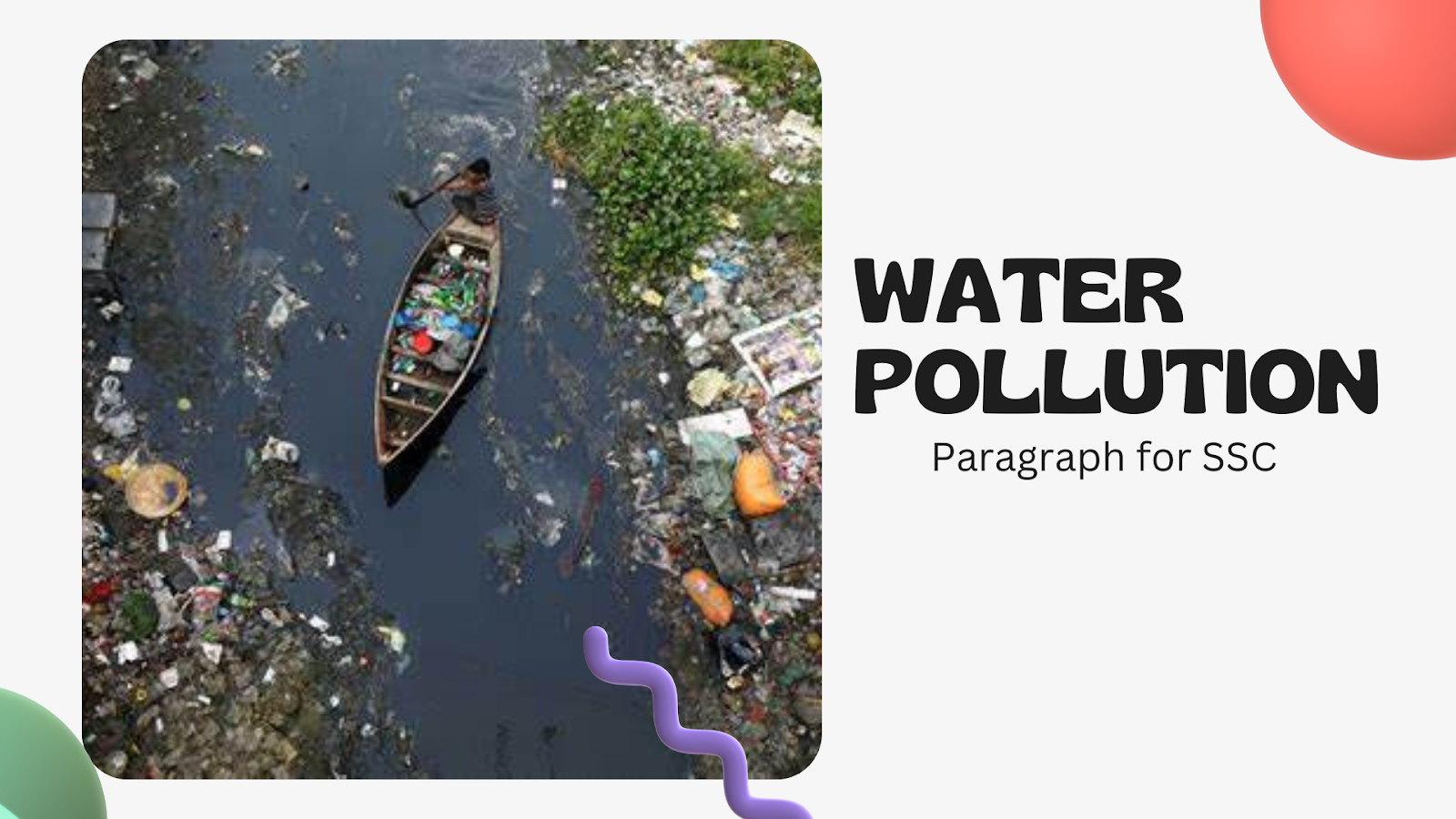Water Pollution Paragraph for SSC/HSC
Water pollution is a complex and far-reaching problem that poses a significant threat to human health and the environment. It can be defined as the contamination of water bodies such as lakes, rivers, oceans, and groundwater, with harmful substances that are often introduced into the environment through human activities. These pollutants can include chemicals, waste, sewage, oil spills, and microorganisms, and can have serious consequences for the health of both humans and aquatic life. One of the most concerning effects of water pollution is its impact on human health. Exposure to contaminated water can lead to a range of waterborne diseases, such as cholera, typhoid, and dysentery, which can cause diarrhea, vomiting, and dehydration, and can even be fatal. These diseases are most prevalent in areas with poor sanitation and inadequate access to clean water. Children, pregnant women, and people with weakened immune systems are particularly vulnerable. Water pollution can also have devastating effects on aquatic ecosystems. Polluted water can lead to the death of fish and other aquatic animals, as well as the destruction of their habitats. Pollutants such as agricultural chemicals and fertilizers can cause algal blooms, which deplete the oxygen in the water, making it difficult for fish and other aquatic life to survive. Other pollutants can interfere with the reproductive systems of aquatic animals, leading to declines in population numbers and a loss of biodiversity. Human activities are the primary cause of water pollution, including industrialization, agriculture, and urbanization. Industries discharge a wide range of pollutants into water bodies, including heavy metals, organic chemicals, and oils. Agriculture can lead to water pollution through the use of pesticides and fertilizers, which can leach into the water system. Urbanization also contributes to water pollution, as storm water runoff can pick up pollutants from roads and buildings and carry them into nearby water bodies. Governments and organizations around the world are taking measures to address water pollution, including the enforcement of regulations and the promotion of sustainable practices. This includes the establishment of water quality standards and the implementation of pollution control measures in industries and agriculture. Organizations are also working to raise awareness of the importance of water conservation and the adoption of sustainable water management practices. It is crucial that we all take responsibility for reducing water pollution. We can do this by properly disposing of waste, using environmentally friendly products, and being mindful of our water consumption. We can also support policies and initiatives that promote sustainable practices and the protection of water resources. By taking action to prevent water pollution, we can help to preserve our planet's water resources and protect the health of both our environment and ourselves.


0 Response to " Water Pollution Paragraph for SSC/HSC"
Post a Comment